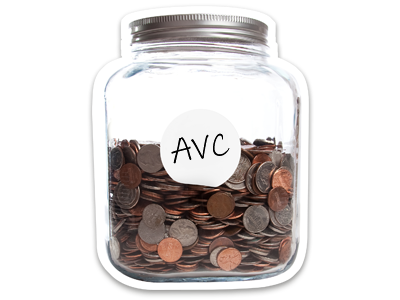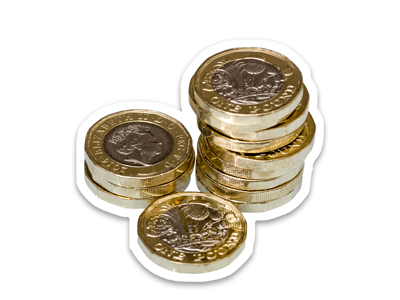10 things to know about pensions
A whistle-stop guide to 10 pension basics that you should know to help you towards a better retirement.

There are 3 main types of pension:
A workplace pension is set up by your employer to help you save for retirement. It's sometimes known as an occupational or company pension. You and your employer both pay regular contributions and the government gives you tax relief (up to certain limits). So it's a great benefit to have. The Railways Pension Scheme (RPS) is a workplace pension.
2. Private pension
Also known as a personal pension, this is arranged privately by you. You set up regular contributions and the government gives you tax relief on the money you pay in (up to certain limits).
3. State Pension
This is a regular payment from the government once you reach State Pension age. Eligibility depends on your National Insurance record. Even if you can get the State Pension, on its own, it may not provide you with enough income to live on comfortably in retirement. You can read more on the State Pension page.
You can find out whether you have a defined benefit (DB) or defined contribution (DC) pension in the Railways Pension Scheme by logging into your myRPS account and checking the Membership Details page, under 'My Pension'.
Your RPS workplace pension is likely to be one of 2 types:
1. Defined benefit (DB)
A defined benefit (DB) scheme pays you a retirement income based on your salary and how long you've been a member of the scheme, rather than on the amount of money you've contributed to the pension.
The RPS Shared Cost Sections are defined benefit sections. They are mostly 'final salary' schemes and give you a guaranteed income for life, based on your final or final average salary.
The DB part of the RPS also includes some Career Average Revalued Earnings (CARE) arrangements, where your pension is based on your earnings right across your membership. With these arrangements, your benefits will increase each year to keep their value against inflation.
You can find out more in the defined benefit members area of the website.
2. Defined contribution (DC)
A defined contribution (DC) scheme builds up a pension pot to be used in retirement. The size of the pot will largely depend on how much you and/or your employer contribute and how much this grows through investment returns.
The Industry-Wide Defined Contribution Section (IWDC) of the RPS is a DC scheme. You can find out more on the how the IWDC Section works page.
Your employer may let you join the IWDC section of the Scheme first, and then join the DB arrangement at a later date.
If you’re a DB member and decide to save more for your future by paying Additional Voluntary Contributions (AVCs), these will go into DC arrangements, known as BRASS or AVC Extra, and are kept separate from your main DB pension. You can find out more about on the saving more page.
You can find out which type of pension you have when you log in to your myRPS account. Log in (or register) and go to the 'Membership Details' page in the ‘My pension’ area of your account.
A group of employer and member elected representatives, known as The Trustee, oversees the management of the Scheme including collecting contributions and paying benefits. The Trustee regularly checks that the Scheme is being managed in line with their expectations and keeps you informed via the Scheme's administrator, Railpen. If you’d like to find out more about the Trustee, go to The Trustee page.
Here are some of them:
Your employer contributes too
What sets a workplace pension apart from a personal pension and other savings options is that your employer normally contributes as well.

You get tax relief
Another key benefit of a pension plan over other savings plans is tax relief. This tax relief is given based on the rate of income tax that you pay. In the RPS, your pension contributions are deducted before you're taxed. That means you will usually pay less tax, because your tax will be calculated based on a lower amount of UK earnings.
Your pension could benefit those you care about
A tax-free lump sum of money could be paid to your loved ones if you die before claiming your pension or if you die in service. Your dependants (usually family) may also get a pension. You can read more on the nominations for death benefits page.
It's easy to manage your Scheme pension online
You can use your myRPS online account to view all your membership and pension information in one place. You can also edit your details, request estimates and access a range of easy to use pension calculation and planning tools.

Investments for DB members
If you have a defined benefit (DB) pension, the money you pay in is combined into a range of carefully selected, pooled investment funds, along with the contributions paid by other members. This is to benefit from economies of scale and helps to pay all members' benefits. The investment performance does not affect how much you will get in retirement because this is typically based on your final pensionable salary over your last year of service and the amount of pensionable service you have at retirement.
Investments for DC members
If you have a DC pension, the money paid into your Personal Retirement Account (PRA) is invested into funds, with the aim of growing your pension pot over time. The value of your PRA will depend on a number of factors, including how well your investments have performed. You can choose to manage your own investments, based on a range of carefully selected options, or have them managed for you. The Trustee, supported by Railpen's investment and risk experts, makes careful decisions about the strategies and funds available, aiming to achieve the best outcomes for members. You can find out more on the investing: basics I need to know page for IWDC members.
Investments for Additional Voluntary Contributions (AVCs)
If you pay more into your Scheme pension, by making Additional Voluntary Contributions (AVCs) you have similar investment choices to the DC investments described above. You can find out more about AVCs in point 5 below. Or you can check the saving more page.
You can put as much money as you want into your pension but there are certain limits which can affect the amount of tax relief you're allowed. If you exceed these limits, you may have to pay a tax charge, so it's worth knowing what they are.
You can find out more about tax relief in our video on the pension tax limits page and learn about the different types of tax allowance and their limits. You can also watch a series of short videos on tax in our video library.

AVCs are popular with RPS members because:
If you want to start making AVCs, you will need to speak to your employer.
This could include:
You can find more details of how a change in circumstances could impact payments into your pension and/or the benefits you will get on the pages below or in your Member Guide.


As a member of the RPS, there are 2 simple ways to find out.
Either of these methods will give you an idea of how much you might get, before tax.
Then, to find out how much you might need to live on in retirement, you can use the Retirement Budgeting Calculator. This uses figures from the Pensions and Lifetime Savings Association (PLSA) Retirement Living Standards to help you picture what kind of lifestyle you'd like in retirement and how much this could cost after tax.
If there's a shortfall between how much you're likely to get and how much you'll need, you might want to think about making some changes. This could include making Additional Voluntary Contributions (AVCs). You can find out more on the saving more page.
Other solutions could include taking your pension later or adjusting your lifestyle plan. You can find out more about the options available to you by visiting the relevant section below:

It's important that you understand the benefits and limitations of each of these options before making a decision. You can find out more on the ways to take my pension page.
Regardless of which option you choose, you may be able to take up to 25% (but no more than £268,275) as a tax-free cash lump sum, unless you have any Lifetime Allowance protection.
For more information about your options, read the how I can take my IWDC pot page.

This is a regular payment from the government once you reach State Pension Age. Whether you can get it or not depends on your National Insurance record. You can find more information on the State Pension page page or go to the government website.
This is a payment from the government which could help you with your living costs if you're over State Pension age and on a low income. Pension Credit is separate from your State Pension, and you may still be able to claim it even if you have another income, savings, or are claiming another pension. To claim Pension Credit, you must have reached State Pension age and live in England, Scotland, or Wales. You can find out more at gov.uk/pension-credit.
If you need further support, you'll find a list of specialist websites and information on how to find a financial adviser when you read the guidance and advice page.
If you're already retired, you can find details of support groups, charities and other organisations on the useful contacts page.
Tell us who you'd like a cash payment to go to if you die before taking your pension.
Discover how paying Additional Voluntary Contributions (AVCs) could help you boost your retirement income.
Access a whole range of support to help you understand your pension better, including videos and Read as You Need guides.